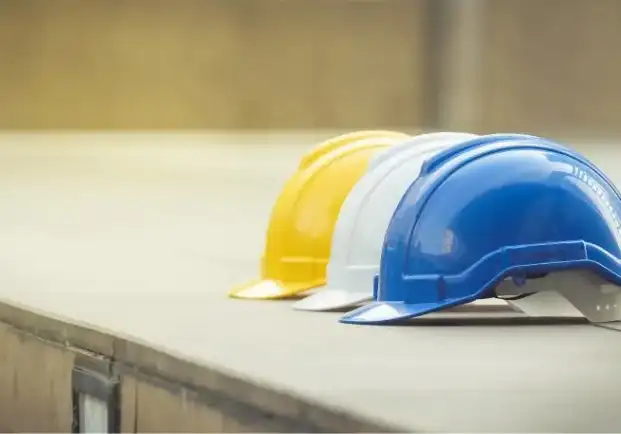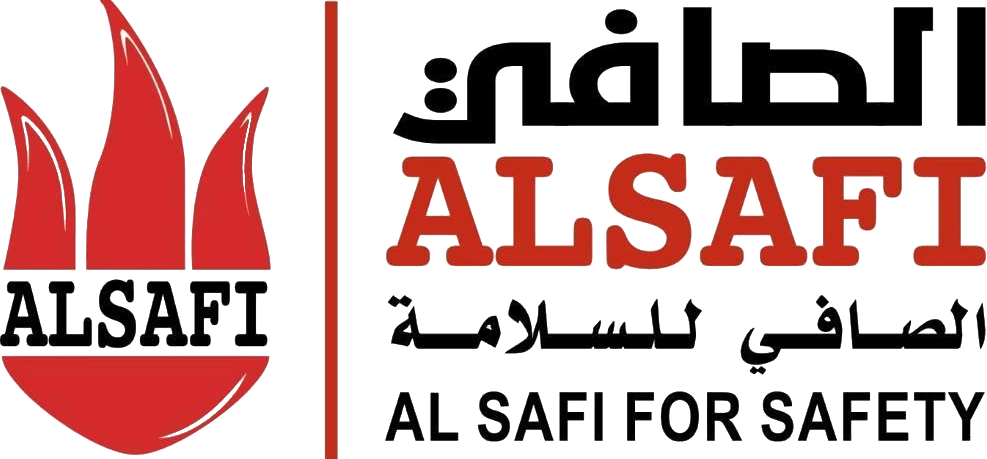المدونة
ارشادات الامن والسلامة في المدارس

لقد أصبحت المدراس الآن تضم عددًا كبيرًا من الطلاب والمعدات والأجهزة والمعامل، وقد يؤدي مجرد خطأ صغير لحدوث كارثة كبرى، يمكن أن تودي بحياة العديد من الأطفال داخل المدرسة؛ لذا فقد تم وضع الكثير من ارشادات الامن والسلامة في المدارس لحماية الطلاب والعاملين والمدرسين داخل المدرسة على السواء، وحمايتهم من أي مخاطر محتملة ، لذا سنوضح لك هنا أهم تعليمات الامن والسلامة في المدارس والتي تضمن بيئة آمنة وخالية من المخاطر.
ارشادات الامن والسلامة في المدارس
فيما يلي نوضح لك ارشادات الامن والسلامة في المدارس على النحو التالي:
- خلو الطرقات مما قد يعوق حركة المشاة.
- في حالة استخدام النوافذ الزجاجية بالطرقات، فيجب ألا يقل ارتفاع الزجاج عن الأرضية عن متر.
- أن يتواجد عدد كافي من طفايات الحريق، وأن توضع بأماكن ظاهر يسهل الوصول لها.
- تُصمم الممرات بطريقة تمنع تجمع المياه فيها.
- يتم التفتيش عن مطافئ الحريق وصيانتها بصورة دورية من قبل شخص مؤهل.
- تعليم التلاميذ كيفية استخدام الأجهزة والمواد الكيماوية بشكل صحيح وآمن؛ ليكتسب المتعلمين العادات الآمنة والسليمة بحياتهم اليومية.
- وجود سلال مهملات وغيرها من الصناديق المخصصة لتجميع المخلفات، وأن تكون مصنوعة من مواد غير قابلة للاشتعال.
- إلمام معظم المتعلمين والمعلمين بمبادئ الإسعافات الأولية وتدريبهم عليها.
- لا يُصرح بالوصول للأماكن المخصصة لتخزين السوائل القابلة للاشتعال سوى لأشخاص مختارين.
- يتم عمل خطة لإخلاء المبنى توافق الجهة الرسمية المختصة عليها.
- تلقى محاضرات عن كيفية الوقاية من الحريق، القواعد التي يجب اتباعها لإخلاء المبانى، ويتم التدريب على الإجراءات التي يجب اتباعها في حالة حدوث حريق بمساعدة الجهود الرسمية المختصة، ويشترك بها التلاميذ والمعلمين.
- تُجري إدارة المدرسة ومدرسوها فحصًا يوميًا لجميع وسائل الخروج؛ للتأكد من حُسن أدائها.
- لا يقل عدد التدريبات التي تتم بالسنة الدراسية الواحدة عن تدريبين للأمن والسلامة.
- يتم تعيين أمين لكل صف من الصفوف المتقدمة؛ ليساعد في تنفيذ التدريب على إخلاء المبنى بشكل صحيح، ويحدد بديلان كحد أدنى؛ لضمان أداء التدريب بشكل سليم في حالة غياب الأمين الأساسي.
- يتم الإنذار من الحريق لأغراض التدريب بواسطة جهاز إنذار الحريق، وليس بواسطة جرس المدرسة.
- تتوفر المياه الصالحة للشرب بموقع المدرسة.
- وجود ستائر معالجة ضد الاشتعال في المعامل.
- وجود باب للطوارئ داخل المعمل.
- وجود عدد كافي من طفايات الحريق الصالحة للاستخدام في المدرسة.
ما هي ارشادات السلامة داخل المدرسة؟
تتمثل ارشادات السلامة في المدارس فيما يلي:
- المشاركة بالاجتماعات الخاصة بأولياء الأمور والتحدث مع المدير عما يمكن القيام به لزيادة السلامة داخل المدرسة.
- التناقش مع طفلك عن السلامة والتحقق من مدى عمله بكيفية الاتصال بك أو بشخص موثوق فيه في حال تعرضه للخطر.
- معرفة طرق الرحلة من المدرسة وإليها، والتأكد بأنك وطفلك على علم بكل من الطرق الأساسية والبديلة بحالات الطوارئ.
- إبلاغ موظفي المدرسة عن المشاكل العاطفية والصحية لطفلك؛ مثل: الإعاقة الجسدية، وحساسية الطعام، أو تعرضه للتنمر.
- معرفة تدابير الأمن والسلامة في المدرسة، وتحديد المرافقين والزوار للأطفال.
- معرفة إجراءات الطوارئ بالمدرسة ومدى تحقق سلامة الطلبة.
كيف أحافظ على أمني وسلامتي في المدرسة؟
يمكنك الحفاظ على الأمن والسلامة في المدارس عن طريق ما يلي:
- التعاون مع المعلمين والزملاء لتحقيق بيئة آمنة داخل المدرسة.
- تجنب القيام بالتصرفات الخطرة مثل اللعب باستخدام الأدوات الحادة أو المزاح العنيف.
- اتباع إرشادات الأمن والسلامة في المدرسة بدقة.
لمزيد من النصائح يمكنك التواصل معنا في مؤسسة الصافي للأمن والسلامة في السعودية
كيف نحقق الامن والسلامة المدرسية ؟
لتحقيق الامن والسلامة المدرسية ، ينبغي على الإدارة القيام بما يلي:
- مراقبة سلامة المرافق بشكل منتظم.
- تعيين مشرفين على النشاطات والفعاليات المدرسية.
- توفير برامج توعية للطلاب بشكل دوري عن أهمية الالتزام بقواعد السلامة.
دليل اجراءات الامن والسلامة في المدارس
فيما يلي نُوضح لك أهم إجراءات الأمن والسلامة التي يجب اتخاذها في المدارس على النحو التالي:
- توفير إجراءات الإخلاء بحالة الطوارئ كتدريبات الحرائق.
- اتخاذ الخطوات السليمة بحالات الطوارئ.
- التأكيد على وجود إجراءات الأمان الملائمة لحماية الطلاب والموظفين على السواء.
- توفير بيئة آمنة لكل من الطلاب والموظفين عن طريق صيانة المعدات والمباني.
- التعزيز من ثقافة السلامة والوعي بالمخاطر، والتشجيع على الإبلاغ عن المشاكل الأمنية.
قواعد السلامة في المختبر المدرسي
في النقاط التالية نوضح لك أهم قواعد السلامة التي يجب الالتزام بها في المختبر المدرسي على النحو التالي:
- ارتداء معدات الوقاية الشخصية الملائمة عند التعامل مع المواد الخطيرة؛ مثل: القفازات، والنظارات الواقية.
- اتباع إجراءات السلامة اللازمة لكل تجربة قبل أن يتم البدء بها.
- التعامل مع المواد الكيميائية بحذر والتخلص منها بشكل آمن.
- تجنب استنشاق أو تذوق المواد الكيميائية.
- العمل داخل المختبر تحت إشراف من قبل معلم المختبر واتباع التوجيهات الخاصة به.
طرق الوقاية من الحريق في المدارس
يتطلب توفير بيئة آمنة داخل المدارس اتخاذ مجموعة من الإجراءات الوقائية الفعالة للوقاية من الحرائق، وفيما يلي بعض الطرق الشائعة للوقاية من الحرائق في المدارس كالتالي:
- تثقيف الطلاب والموظفين: ينبغي توفير التثقيف والتدريب الملائم لكل من الطلاب والموظفين عن طريقة التعامل مع حالات الطوارئ، بالإضافة إلى إجراءات الإخلاء بحالة حدوث حريق.
- فحص وصيانة الأنظمة السلامة: يجب فحص وصيانة أنظمة الإنذار بالحريق، وأنظمة إخلاء الطوارئ، وأجهزة الإطفاء بشكل منتظم؛ لضمان كونها تعمل بصورة صحيحة.
- تركيب أجهزة إنذار بالحريق: يجب تركيب أجهزة الانذار بالحريق بنقاط استراتيجية داخل المدرسة؛ مثل: المختبرات، والقاعات الكبيرة، والممرات، والمكتبات، واتباع قواعد السلامة داخل المختبر.
- توفير مخارج الطوارئ: ينبغي توفير مخارج الطوارئ وتوضيحها بشكل واضح؛ لضمان إمكانية إخلاء المبنى بشكل سريع في حالة نشوب حريق.
- تحسين إجراءات الإخلاء: ينبغي وضع إجراءات محددة وواضحة لإخلاء المبنى في حالة نشوب حريق، ويجب تدريب الموظفين والطلاب على تلك الإجراءات بشكل منتظم.
- تنظيم تدريبات إخلاء: ينبغي تنظيم تدريبات إخلاء منتظمة؛ لتجريب كفاءة إجراءات الإخلاء والتأكد من أن الجميع مستعدين للتعامل مع حالات الطوارئ.
- تعزيز الوعي بالسلامة الشخصية: ينبغي تعزيز الوعي بالسلامة الشخصية فيما بين الموظفين والطلاب، بما في ذلك تعليمهم طريقة التصرف في حالة تعرضهم للنيران أو الدخان.
شركة الصافي لسلامة وأمن المنشآت المدرسية
تُعد شركة الصافي من الشركات التي توفر لك حلولًا شاملًا لضمان سلامة وأمن المنشآت المدرسية، بدايةً من تصميم أنظمة الإنذار المبكر وصولًا لتدريب الكوادر على إجراءات الطوارئ.
لأن اتباع تعليمات الامن والسلامة في المدارس هو المفتاح لنجاح العملية التعليمية وتحقيق بيئة مدرسية سعيدة وآمنة.
وهكذا نكون قد عرفناك على أهم ارشادات الامن والسلامة في المدارس، والتي تضمن بيئة آمنة لكل من الطلاب والمدرسين والعاملين داخل المدرسة على السواء؛ لحمايتهم ووقايتهم من أي مخاطر محتملة، والحفاظ على حياتهم بأفضل شكل ممكن.
أسئلة شائعة قد تدور في ذهنك حول ارشادات الامن والسلامة في المدارس
ما هي وسائل السلامة في المدرسة؟
من هذه الوسائل معدات الإسعافات الأولية والتي تتضمن المراهم، والضمادات، وأدوات الإسعاف الأساسية، بالإضافة إلى نظام إنذار الحريق؛ لتنبيه كل من الطلاب والموظفين بحالة الطوارئ، ومعدات الحماية الشخصية كالقفازات والخوذات للأنشطة العملية.
كيف تتصرف في حالة حدوث حريق في المدرسة؟
يجب حينها إغلاق النوافذ والأبواب معًا؛ لمنع انتشار الحريق، ومحاولة إطفاء النار بأي وسيلة حماية موجودة داخل المدرسة، سواء طفاية حريق أو خرطوم مياه، إلى أن يصل رجال الدفاع المدني.
هل كاميرات المراقبة مهمة في المدارس؟
نعم مهمة؛ إذ أنها تستخدم في مراقبة للأمن والسلامة داخل المدرسة.



